Text
mbti explained (how to self-type)
what is mbti?
mbti is a tool which is frequently used to help individuals understand their own psychological preferences in communication, interaction with others, perceiving the world, problem solving, managing changes, resolving conflict etc.
is mbti even a real thing?
though the mbti resembles some psychological theories, it has been criticized as pseudoscience and is not widely endorsed by academic researchers in the field.
———————————————————————
now that you have an idea about what mbti is - let’s get familiar with the 8 mbti functions
1. extroverted sensing (se)
extroverted sensing is using taste, touch, smell, sound, movement and sight to easily absorb information in the physical world. as strongly observant, these people pick up on details other people do not notice, and some even have a photographic memory. they love excitement, spontaneity, new experiences, and material goods.
2. introverted sensing (si)
introverted sensing is understanding the world through past precedent and experience. people who are introverted sensors thrive using routine, tradition, organization, and rules. they are often very attuned to their bodies, and have specific ways of doing things that work for them in order to get the job done. they are responsible, reliable, and cautious.
3. extroverted thinking (te)
extroverted thinking is outwardly conveying thoughts using logic, reason, and analysis. extroverted thinkers are clear and concise, direct, and unmoved by emotional appeals. they are often strong orators and writers, who have thoughtful, well-researched arguments and theories. extroverted thinkers like to convince people of their thoughts and implement new ideas.
4. introverted thinking (ti)
introverted thinking is a function that seeks to understand personal ideas using a deeply specified framework. introverted thinkers are constantly mining their own thoughts in an attempt to be rational and reasonable, slowly ruling out other ideas before coming to their own firm conclusions and they’re often guarded about how they got to these conclusions.
5. extroverted intuition (ne)
extroverted intuition often means noticing patterns, symbols, and connections in the world that others may not see. extroverted intuitives live for possibility, often expressing themselves through a tumble of ideas, or a constant external brainstorm. they may talk about many things they want to do, but not ultimately follow through. for them, it’s all part of the process to get to the best idea.
6. introverted intuition (ni)
introverted intuition is described as “knowing without knowing how,” as well as “thinking without thinking.” it’s the most mystical of all the mbti functions. people with this dominant function tend to reach conclusions without having a clear idea as to how they got there. they are wise, convicted, and always have a plan to work toward a bigger picture and seek to build and understand complex systems. Introverted intuitives are always processing in the background, and regularly have answers simply come out of nowhere.
7. extroverted feeling (fe)
extroverted feeling is concerned with harmony, bringing people together, and caring. extroverted feelers are great at reading the emotions of others; they are big empathizers, absorbing the feelings of others around them to the point that they sometimes cannot tell which feelings are their own. they easily squash and step around conflicts, and they are typically very social.
8. introverted feeling (fi)
introverted feeling is a function concerned with authenticity, individualism and values. introverted feelers know what they believe, have a strong sense of self, and can easily identify their personal experience of emotion. they are often outspoken activists, and love to help those in need. they don’t have stronger feelings than others who utilize this function, but they do have more mastery over them and can put them toward change—of self, of others, of society.
———————————————————————
understanding the mbti functions as the 16 types
now that we’re clear about the eight mbti functions, we can better understand how they correspond to each of the 16 personality types. each type has four functions, ordered in a stack from strongest to weakest:
dominant function
the first function in the stack is called the dominant function, the strongest one you use so often, you may not even realize you are doing it.
auxiliary function
the second function is called the auxiliary function, which assists the dominant function in conveying ideas and is also relatively strong in your personality.
tertiary function
the third function is the tertiary function, which may be slightly under-developed, but does start to manifest in your type more prominently as you age.
inferior function
the fourth function is your inferior function, which is challenging to access and often only comes out under stress.
now, let’s look at all of the types and their functions.
INTJ: Ni > Te > Fi > Se
INFJ: Ni > Fe > Ti > Se
ENTJ: Te > Ni > Se > Fi
ENFJ: Fe > Ni > Se > Ti
ENTP: Ne > Ti > Fe > Si
INTP: Ti > Ne > Si > Fe
INFP: Fi > Ne > Si > Te
ENFP: Ne > Fi > Te > Si
ESTP: Se > Ti > Fe > Ni
ESFP: Se > Fi > Te > Ni
ISTP: Ti > Se > Ni > Fe
ISFP: Fi > Se > Ni > Te
ISFJ: Si > Fe > Ti > Ne
ESFJ: Fe > Si > Ne > Ti
ESTJ: Te > Si > Ne > Fi
ISTJ: Si > Te > Fi > Ne
to take a closer look, let’s break down what this means for just one of the types. say we’re analyzing the ISTP personality. to do this, we consider the four cognitive functions that correspond to the respective personality type in order to get a deeper understanding.
ISTP: Ti > Se > Ni > Fe
ISTPs are rational and reasonable, very analytical, logical and objective (dominant ti). they have detailed memory of events. they focus on the objective, sensory world and are eager to experience it fully (auxiliary se). may be focused inwards, on the internal world of thoughts, ideas, and concepts (tertiary ni)
the ISTP’s inferior function (fe) may only be noticed when they are under stress or in the problems they deal with often, especially considering the inferior function is often the opposite of the dominant function.
6K notes
·
View notes
Text
Cognitive Functions and What They Look Like Explained with Objects
I’m going to attempt explain the cognitive functions better than I have before, and hopefully in a lot more depth. The risk with this is that it could be wrong, but at least an attempt was made. I’m not an academic or anything, I’m just writing from observation/experience stuff that I find helpful to understand. Hopefully this can help you type yourself more accurately too! All functions are described as they are in the first 2.
I hope this helps you see how EVERY FUNCTION IS IMPORTANT!
And no. None of these objects really make sense.
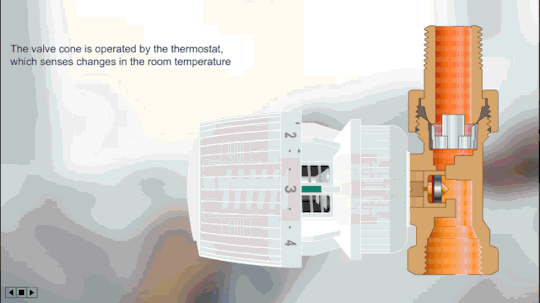
Fe: The Thermostat
A thermostat can’t feel whether it’s hot or cold itself, but it can feel if you are! And depending on how fancy your thermostat is, it will cool you or heat you until you’re just the temperature you want to be. That is its single goal in life: to keep you comfortable. If you’re sad, it will try to fix it.
Basically, Fe is about everyone being genuinely happy and comfortable. It wants to be in touch with other people and respond to their needs accordingly. It’s not necessarily good at showing or expressing this, but that’s its aim.
Well developed Fe is the function that encourages open discussion of problematic feelings that it KNOWS are right there - remember, it can FEEL them, cos it’s a thermostat. Poorly developed Fe ignores unspoken problems and pretends it’s a good little thermostat anyway.
If you’re upset with a Fe user, just tell them calmly. If you need space, just tell them calmly. If you’re angry, tell them why. READJUST THE THERMOSTAT. Don’t be surprised when the Fe user does the same - that’s their way of trying to keep everyone happy in the long run. Good Fe believes arguments are necessary. Bad Fe is passive aggressive and let things build up until they’re too big to handle. If you sense your Fe user is doing this, approach them about it and get it out while you still can. Fe users don’t talk about issues with emotions most of the time - they speak about feelings clinically. It helps if you explain to a Fe user how the problem makes you feel, but also that you still love them.
High Fe - is a natural thermostat. It doesn’t even realise that’s how it operates, it just DOES. High Fe users can struggle to even FEEL that they have their own problems, and can easily be ignored as a result (sheeple). As their Ti develops, they should become a little more self aware, and better at turning their natural thermostat off every now and again so they get a break. A key feature of high Fe users is that they’re just ALWAYS THERE. You might hate them, get sick of them, find them annoying, or feel like they don’t understand you… but they’re always there. Always trying. Immature high Fe is very sensitive to extreme temperatures, but with Ti development comes a bit more separation and ability to help you through, even if you’re not responding to their attempts at cooling/heating you. Because constantly living as a thermostat requires you to learn that SOMETIMES you just can’t change the weather. So at the end of the day, even though they’re not a T type, well developed high Fe users can actually be less sensitive and more useful in a rough patch than their low Fe counterparts.
Low Fe - is a thermostat with emergency settings. It kicks in at unusually high or low temperatures and gets it back into humanly-survivable temperatures. As Fe develops, low Fe users become more sensitive to other people’s temperatures and can regulate the environment a little better. While low Fe users aren’t naturally very sensitive to your extreme temperatures, they can become suddenly overwhelmed and deeply upset if things go too far and they’re the reason you’re not doing so well. With good character development, which is totally SEPARATE from MBTI, a low Fe user can become just as good at maintaining the perfect temperature as a high Fe user. It will just take a little more effort and skill. BUT, since they’re not always used to being a thermostat, they’re not always aware of what’s the weather and what’s their fault. So at the end of the day, even though they’re not an F type, well developed low Fe users actually seem to be more sensitive and fragile than their high Fe counterparts.
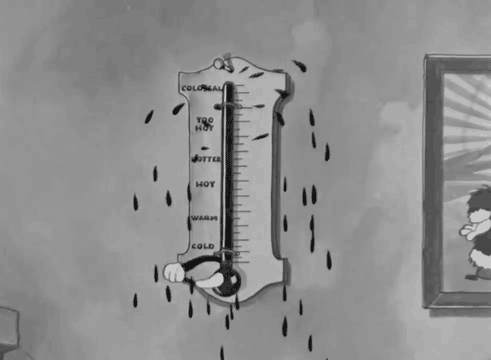
Fi: The Thermometer
The thermometer can’t really do anything about the weather - it can just tell you what’s going on. Fi users are very sensitive to what’s going on around them, and feel the need to regulate the climate they’re in as much as possible. That is: going against their own feelings can actually be painful for them. They feel a very strong NEED to be who they are. Fi is about being in touch with yourself and your own emotions/beliefs/you name it. Bad Fi can easily be selfish, but good Fi has the capacity to help where Fe stands… clueless.
Good Fi values you feeling good too! Fi users CAN apply their thermometer to others and get a reading on how hot/cold their climate is. They can’t feel your emotions like the Fe thermostats, but if you express emotion they can essentially measure it. Good Fi users try to help you in any way they would feel would be helpful if they were in your shoes. This means Fi users are much better at showing sympathy than Fe users.
If you’re upset with a Fi user, you have to tread carefully. They can be easily hurt, and will definitely take things the wrong way if you don’t articulate it correctly. The clinical approach of Fe users is often not appreciate, because it’s interpreted as cold, uncaring, or worse - nasty. You’ll have to express a lot more emotion when talking to a Fi user. From what I’ve found, you have to approach Fi with Fi, so I’ve never managed to do this successfully. It always becomes a fight for like an hour until finally the Fi user understands what I was trying to say. So, from what I’ve found, Fi finds the Fe approach hostile, but responds better to genuine displays of emotional vulnerability.
High Fi - is a natural thermometer. It knows what it’s feeling, what it believes in… all that jazz. It finds it hard to compromise its feelings and beliefs for ANYTHING or ANYONE. It can be kind and sensitive as a result, but also very fragile and easily overwhelmed. Well developed Fi users learn to work through the emotional instability of thermometer life, but immature Fi can be unstable and selfish. Te development helps high Fi users get on with things and move through whatever they might be feeling. They can apply that same resilience to others who are suffering, and inspire people to get through their emotional lows. So at the end of the day, even though they’re not a T type, high Fi users can function better under emotional pressure and inspire action better than their low Fi counterparts.
Low Fi - is a thermometer that is usually ignored in favour of getting things done. This means high Te users can be confident and headstrong most of the time, but occasionally have dramatic shut-downs into low Fi. And since they usually ignore their thermometer, they don’t really know what to do about it. HOWEVER, well developed low Fi users can learn to apply their thermometers to others with some skill. And they can be more overwhelmed by others’ emotions because their Fi is so low. So, at the end of the day, even though they’re not an F type, well developed low Fi users can be more sensitive and sympathetic than their high Fi counterparts.

Te: The Car
The car is designed to get you from point A to B without death or injury. It’s complex, but not too much can go wrong at any given moment. The process itself is fairly simple: engine sparks, wheels go round - drive. Te wants to get to point B quickly, and is focused on action and outcomes. And if you stand in its way, you might get run over. It isn’t necessarily focused on the steps required to get from point A to B, it just sees the end and drives.
Well developed Te values doing things effectively as well - not just getting them done in the first place. This means Te users can be persuaded to change their approaches and routes providing you can argue that it’s worth it. Te is good at seeing potential in other people, but can make the mistake of seeing the end point and missing the starting point or steps required to develop.
If you’re upset with a Te user, you’ll have to appeal to Fi. No one likes criticism, not matter how high a T function is! However, high Te users can tolerate and even appreciate the Fe approach to relationships and conflicts, providing they’re not having a low Fi moment.
High Te - This is life in the car, on the road. Always heading towards a new goal. However, contrary to popular opinion, Te users can actually be very kind and considerate! Providing they’re well developed, Te aims to take care of the people it loves. High Te users can fall into the Te trap of seeing the person’s potential without recognizing they’re not quite there yet. They can be very idealistic and romantic in relationships because their Fi is so low. They can also be angry little cars who run people over if they’re poorly developed or just mean. This is why Te users have a reputation for being cold and controlling. I’ve found Te users only really act like this when they’re succumbing to low Fi.
Low Te - This is the car that mainly sits in the garage, but occasionally comes out for a Sunday drive. Although, poorly developed low Te looks like saying mean things just to hurt people when you’re upset, or provoking people for a reaction.High Te users definitely go through phases like this when they’re young, but low Te users are more open to these problems when they’re older. Well developed, low Te helps high Fi users overcome their overwhelming feelings and get through things. It may even help them compromise if they absolutely must.

Ti: The Aeroplane
The aeroplane is designed to take you over long distances very quickly, and as safely as possible. There are back up systems, back up systems for back up systems, and multiple things can go wrong if you forget to do even one simple thing. It’s a much more dangerous process than driving, but it’s also much faster if you’re trying to go far.
Ti is about understanding things so that you can run your life well. Poorly developed Ti is dysfunctional, but well developed Ti can get you pretty far with very little effort! But unlike Te, Ti isn’t as focused on the end destination so much as it is on the steps required to get there. Every little detail matters, just like on an aeroplane. And if even one small detail has been misunderstood, the Ti users’ entire understanding of something can go crashing down like an aeroplane. They MUST understand the parts to understand the whole.
If you’re upset with a Ti user, you can refer to the Fe section. Ti users prefer a clinical approach to emotions simply because they want to UNDERSTAND rather than be overwhelmed by negative feelings their thermostat will detect once you start crying in front of them. Ti will then engage thermostat measures to ensure relationship contentment.
High Ti - Life in the sky as a pilot. The Fe thermostat doesn’t matter so much when you’re trying to make sure you don’t fall out of the sky. High Ti users aim to understand every small thing in life. Poor high Ti users have a faulty misunderstanding and drive everyone insane arguing they’re right. Well developed Ti users have a good understanding, but often enjoy arguing anyway, just to make sure they don’t have any flaws in their understanding. When you’re arguing against yourself, you have to know your stuff pretty well! While they’re not given enough credit for it, high Ti users can be very considerate in relationships, and aim to understand their loved ones just as well as everything else. Ti isn’t satisfied with a functional understanding, so it may provoke and tease to better understand people. And when it goes too far and upsets people, the emergency thermostat kicks in to fix the problem.
Low Ti - life in the sky as a co-pilot. Low Ti users prefer to take their cues from someone ELSE - preferably the pilot (high Ti user). Low Ti users can be overwhelmed if they have to take on too much responsibility or have to understand too many small details. Then they can feel like a co-pilot taking control of a plane after the pilot has died and the plane is spiraling down. They’d rather do what they’re told and keep the pilot happy! But they also take comfort in knowing that - if it really comes down to it - they can fly the plane and land safely. They like knowing they have back up systems, back up systems for back up systems, and are capable of making it out alive.

Ne: Google Search Auto-predict
You’re not even finished typing, and Google already has 10 ideas about what you might be asking. That’s the Ne brain - branching out, and out, and out… sometimes a bit TOO out.
High Ne - Google search auto-predict is always on. It all happens at once, just like how Google suggestions change with every letter you add. And when you finish your question, it’s kind of disappointed you didn’t ask one of the 10 other more interesting ones. Easily bored, always sees a better option… but also very good at picking which option is most realistic. May or may not care.
Low Ne - random auto-predict. Because sometimes Google doesn’t predict anything as you type? That’s a weird phenomenon. But then it’ll just suddenly appear halfway through a sentence? Yeah… like that. Poorly developed low Ne can mistake every new idea as a great idea, but well developed low Ne knows which ones are worth listening to :)

Ni: Google Search Results
Did you mean…? Not only shows you every single possible thing on what you Googled, but also shows you what could be immediately connected to it.
High Ni - Figures out what you’re looking for based on a few key words that may or may not have made sense - understands your typos. Does it all in seconds, doesn’t really understand the algorithm. Just does it. Can take you down a rabbit hole for hours. Forgets about time as a concept. Sometimes connects strange things, but somehow makes sense anyway. Usually isn’t wrong about what you were Googling. Bad Ni thinks it knows everything though, and forgets it needs to add things to its database. Good Ni is always learning MORE
Low Ni - Like the 20th page of Google Search Results. Doing the same thing as high Ni, but not as effectively. Might have a few conspiracy theories in there. Might’ve misunderstood your question or taken the typos literally. Occasionally gets it right, but the best results are usually on the first page anyway.

Se: The Camera
Takes a picture of the moment, every detail rendered exactly as it was.
High Se - High focus camera, good colour, good lighting - the kind of pictures you want to keep forever and frame. Se knows what’s right in front of it. It doesn’t miss anything it can see. Might not understand what’s about to happen, but knows what IS happening.
Low Se - Like a polaroid camera, and the pictures might not be worth keeping. Awkward shots that are accurate but not great quality. Might be blurry, not really able to see faces… just a LITTLE bit out of focus, so that you miss something that was pretty obvious. Has a kind of artsy vibe though.

Si: The Diary
Recorded everything, but from a very subjective point of view that may or may not be accurate. Is structured so that it can be read again and again.
High Si - A very detailed diary. Concerned about detailing every aspect of life. Some pages have been ripped out. Sometimes pages are inserted to add in additional information that may or may not alter the entire memory. A nice little organised diary that’s written very neatly.
Low Si - A diary that gets an entry once every 6 months or so. Still valued and personal, but a lot is missing. Since it’s less tended to, pages are less likely to be missing or replaced - so what’s written is probably more accurate. There’s just not that much of it. A very badly written diary that’s got coffee stains and might not be entirely legible.
1K notes
·
View notes
Text
Cognitive Functions and their Paradoxes
Fi
“I don’t like to see others sad”
“I want my feelings to be taken care of first”
Fe
“I need to help everybody”
“I hate everybody”
Ti
“I understand everything so much better than others”
“It is not humanly possible to reach a state of complete knowledge”
Te
“I want to meet goals quickly”
“My impatience makes me miss out important details, which slows down progress”
Ni
“I know the truth of everything”
“My mind is so abstract that I can’t pin down what I’m thinking”
Ne
“I have a million possible ideas”
“But I have a hard time deciding which one is better than the rest”
Si
“I need to remember every little detail to feel safe”
“Because I know all the minute angles of a situation by heart, I can perceive a million ways things can go wrong and I feel very unsafe”
Se
“I’m one with my surroundings”
“I can be so reckless that I keep making physical accidents”
5K notes
·
View notes
Text
INFJ: I am strong, I am smart, I am beautiful.
*minor inconvenience happens*
INFJ: Bury me in the catacombs and do not mourn me I am the wind I am the snowflakes melting on your cheeks I do not belong here
5K notes
·
View notes
Text





If only they had...I shipped these two so hard and it is very rare for me to ship the actual actors that portrayed the characters. But these two...well, it was just so obvious that he was in love with her. Not to mention that she had a thing for him as well. Although, Mrs. Andrews was not as vocal about it as Mr. Plummer was.
Fun fact: In the Sound of Music, right after Georg breaks off his engagement to Elsa, he goes in search for Maria and finds her sitting on a bench right outside the gazebo. This is the scene where Georg is supposed to reveal his feelings for Maria, the only problem was that Christopher Plummer had forgotten his lines, so he improvised by telling Julie Andrews his real feelings instead. The scene was so poignant that the producers and director decided to keep it.
The moment he began improvising:
Maria: Yes?
Georg: Well, nothing was the same when you were away...and it will all be wrong again when you leave and I was just hoping that perhaps you might...change your mind?
It was this scene that he faltered and Christopher Plummer said that all he could think about was how desperately he missed Julie Andrews when she was not filming in Austria with him, so, he decided to roll with it.
youtube
Expect a slew of Sound of Music gifs and videos. Sorry, my peeps, it was my all time favorite movie and I have to give props to my man, Mr. Plummer.
273 notes
·
View notes
Photo



I saw this tumblr post and HAD to draw it, please accept my humble A:TLA offering.
166K notes
·
View notes
Photo
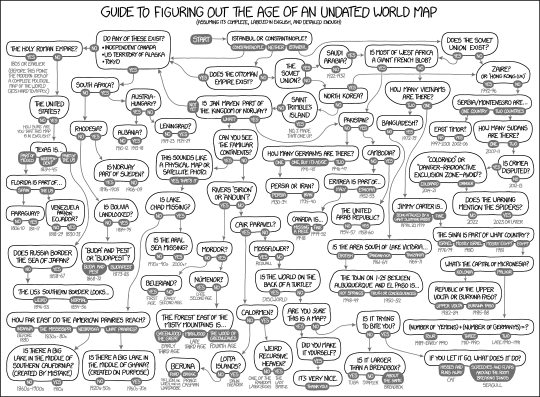
Guide to Figuring out the Age of an Undated World Map.
250K notes
·
View notes
Photo

Today’s bunny report: one (1) spotted. This has been your bunny report. (at Campbell Park) https://www.instagram.com/p/CCKjifGpFCGPAYYKxw2a1phe6snIUsuNkzkYlw0/?igshid=j1fwe6r0p8sb
0 notes
Photo

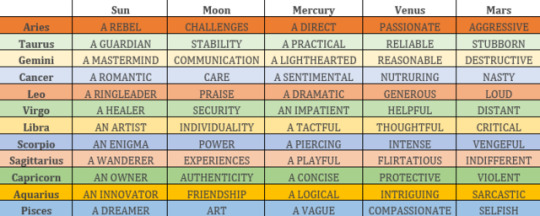

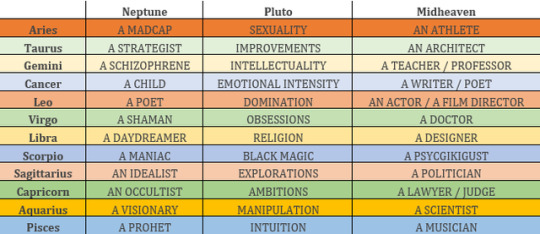

I have stumbled upon this post many times and every time it bothered me that you have to scroll a lot to know the words soooo…. I made this in Word, trying to be less cluttered (sorry for bad quality)
ORIGINAL POST BY @youstrology 💖
36K notes
·
View notes
Video
Two cats won’t give up on trying to enter a Japanese Art Museum, the war has been going on for 2 years now.
(Source)
133K notes
·
View notes
Photo

I can’t believe how lucky I am to see this right in front of our house. (at Markham, Ontario) https://www.instagram.com/p/CBTqhnvpX1DsGsD1r6ukkuDNKVma_LFuyjIQf80/?igshid=1ta0iz9lt7inb
0 notes












